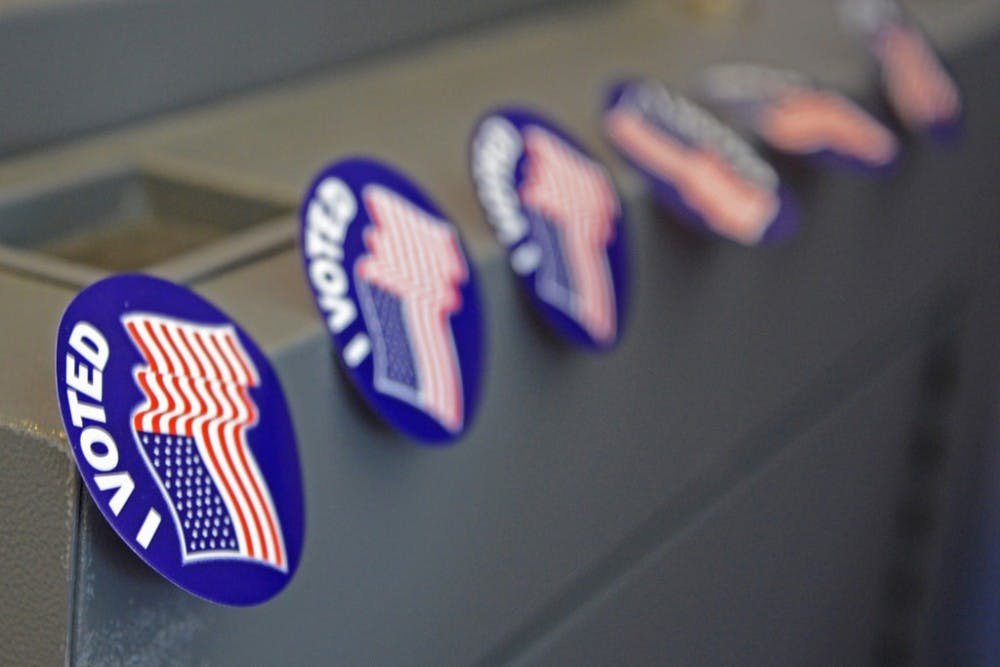
| Courtesy of KOMUnews
Two days following the victory of President-elect and 1968 Wharton graduate Donald J. Trump, faculty members of the Political Science Department spoke at a panel to discuss and unpack the outcome of the 2016 presidential election.
Speaking in a room packed with both students and faculty, the four panelists each gave their own understanding and analysis of how the Republican candidate won the race. They addressed the shock of Trump’s victory, which exit polls did not predict.
The event was planned prior to the outcome of the election, as part of ‘Knowledge by the Slice’, a series of lunchtime lectures hosted by educational faculty.
Undergraduate Chair of the Political Science Department Marc Meredith, who was at the NBC decision desk on election night, said that while the polls were not far off in forecasting the popular vote, they missed the “distribution of support” that would ultimately secure Trump’s victory in the electoral college. He added that the polls were far off the mark in states like Pennsylvania, Wisconsin and Michigan.
“I think the big narrative coming out of this campaign is, ‘what happened in rural America?’” he said.
Meredith pointed out that Secretary Hillary Clinton significantly underperformed compared to President Barrack Obama in 2012 in many rural counties. He noted that a qualitative study in Wisconsin showed that many people in these regions felt that politicians did not respect or fight for them.
Associate Professor Daniel Hopkins said that while Democrats often pile up the votes in major metropolitan areas, winning 80-90 percent of the vote, Democrats in northern states traditionally only receive about 20-30 percent of the vote in many rural counties.
“There’s actually a sizable number of democratic votes that come outside of cities from white voters who don’t have college degrees, and it looks like that share of votes that Democrats have counted on from rural areas has been taken for granted to some important extent,” Hopkins said.
Hopkins said the election hinged on states with a broad base of white, working class voters. He called states such as Pennsylvania, Michigan and Wisconsin “elastic” because in the past they have elected candidates from both parties.
“Pennsylvania was the tipping point state in the last election. [It] was the state in which the 270th electoral college vote was cast in 2012, and that very well may be true in this election,” he said.
On a different note, Graduate Chair and Associate Professor Matthew Levendusky discussed the effect of polarization and the difficulty of overcoming partisan divisions.
“If you look at what happened over the last six weeks, basically the only shift in preferences that happened was that Republican voters came home to Trump,” Levendusky said. “That should’ve clued me in that something important was happening, but I and many others, missed that.”
He said college educated white voters — who many thought would deliver the election to Clinton — ultimately decided to vote for Trump.
“At the end of the day, they decided that they disliked Trump, but they disliked Clinton more,” he said.
Postdoctoral Fellow Brielle Harbin listed several potential explanations for Trump’s victory, including “backlash to African American advances, referendum on establishment politics, a lack of trust in Hillary Clinton, misogyny, referendum on political correctness and anxiety surrounding job losses.”
“Political scientists over the course of this election have argued these different points. My personal opinion is that it’s a perfect storm of all these things together,” Harbin said.
Similarly, Hopkins expressed that there is no single explanation that can account for the outcome of the election.
“One of the things that are incumbent upon us, especially just after an election, is not to just grab for that first piece of data and settle on a single narrative that makes sense of how many millions of people voted,” Hopkins said. “Many millions of people voted for different reasons.”
The Daily Pennsylvanian is an independent, student-run newspaper. Please consider making a donation to support the coverage that shapes the University. Your generosity ensures a future of strong journalism at Penn.
Donate







